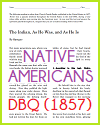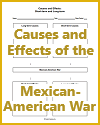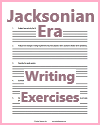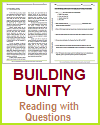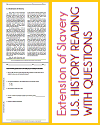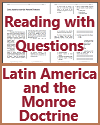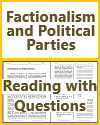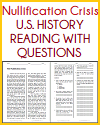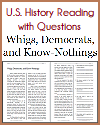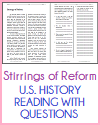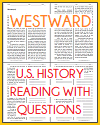 |
| Unit V: Westward Expansion and Regional Differences Worksheets |
|---|
| www.studenthandouts.com ↣ U.S. History ↣ Westward Expansion ↣ Worksheets |
 |  |  | 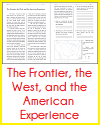 | |||||||
| Early U.S. Foreign Policy Writing Exercises | "Duties of Youth" (1857) DBQ Worksheet | Manifest Destiny and War with Mexico Essay Questions | Frontier, West, and American Experience Reading with Questions |
|
During the antebellum period (the decades leading up to the American Civil War, roughly from the late 18th century to 1861), the United States experienced significant waves of immigration from various parts of the world. Some of the principal immigrant groups during this period included: Irish: The Irish immigration to the United States surged in the early to mid-19th century due to factors such as the Irish Potato Famine, economic hardship, and political instability in Ireland. Irish immigrants settled primarily in urban areas in the Northeast, often facing discrimination and difficult working conditions. German: German immigrants, known as the "forty-eighters" (referring to those who arrived after the failed 1848 revolutions in Germany), were a prominent group in the antebellum period. They settled in various parts of the country but were concentrated in the Midwest, where they contributed to agricultural development, education, and cultural diversity. English: English immigrants, including both working-class and upper-class individuals, came to the United States for economic opportunities, land ownership, and religious freedom. They settled in various regions, including the South and Midwest. Scots-Irish: The Scots-Irish, or Ulster Scots, were primarily descendants of Scottish and English settlers who had lived in Northern Ireland for generations. Many came to the United States in the 18th and early 19th centuries, settling in the Appalachian region, where they had a significant cultural and social impact. Chinese: Chinese immigrants arrived in the United States during the mid-19th century, primarily in response to the California Gold Rush and later to work on the transcontinental railroad. They faced discrimination and restrictive laws, such as the Chinese Exclusion Act of 1882. African Americans (Enslaved): Although not immigrants in the traditional sense, millions of enslaved African Americans were brought to the United States during the antebellum period through the transatlantic slave trade. They were forcibly brought to work primarily in the agricultural economies of the South. Mexican Americans: The southwestern United States, including present-day California, Texas, New Mexico, and Arizona, had Mexican populations before and during the antebellum period. The Treaty of Guadalupe Hidalgo (1848) and the Gadsden Purchase (1853) expanded the United States' territory in these regions. French: French immigrants, including Creole populations from Louisiana and Acadians (Cajuns) from Nova Scotia, contributed to the cultural diversity of the United States, particularly in areas like Louisiana. Norwegian and Swedish: Immigrants from Scandinavia, including Norway and Sweden, began arriving in the United States in the mid-19th century, settling mainly in the Midwest and the Upper Midwest. These immigrant groups brought diverse languages, cultures, religions, and traditions to the United States during the antebellum period, contributing to the nation's rich tapestry of identities and experiences. Their stories and contributions continue to shape American society today. |
| www.studenthandouts.com ↣ U.S. History ↣ Westward Expansion ↣ Worksheets |



